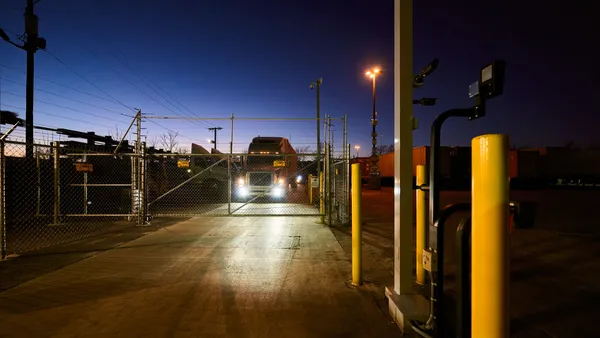Dive Brief:
- Flex's investment into its own supply chain solutions software, Flex Pulse, has helped the company avoid multi-million losses from natural and man-made disasters, according to a Fortune report.
- The company's Flex Pulse combines a physical headquarters in Flex's Silicon Valley Innovation Center, featuring wall-to-wall touch screens, software that pulls data from various sources including supply chain solutions software Elementum and real-time sourcing and delivery capability through mobile technology.
- Flex Pulse alerted the company of the 2015 Tianjin port crisis before internet communications was shut off by China and the 2016 Kumamoto earthquake, allowing the company to activate contingency plans and avoid roughly $55 million of combined disruption costs, Fortune reports.
Dive Insight:
Flex's decision to create its own private system pulling from various software solutions and employ its own mobile technology for real time visibility shows that despite the dearth of supply chain solutions software the technologies don't always provide the best fit for many companies.
Data can be collected in droves, but if the proper analysis mechanisms don't exist the data is useless. Software solutions executives told Supply Chain Dive a problem must first be identified before they can customize a solution, so a deeper problem may be that many of us don't know a problem until we see one. How can an executive become best in class if they do not know what their "class" performance is?
That may be why various companies employ general supply chain solutions platforms from Elementum to SAP, while continuing to develop their own solutions in spreadsheets or through other technology. Having a platform consistently collecting data provides executives with the comfort of knowing the data they need will be there when they need it.
Flex sought to increase agility through visibility, so for the company, an independent mobile-integrated solution designed to source, rather than collect, data was the best fit solution.














